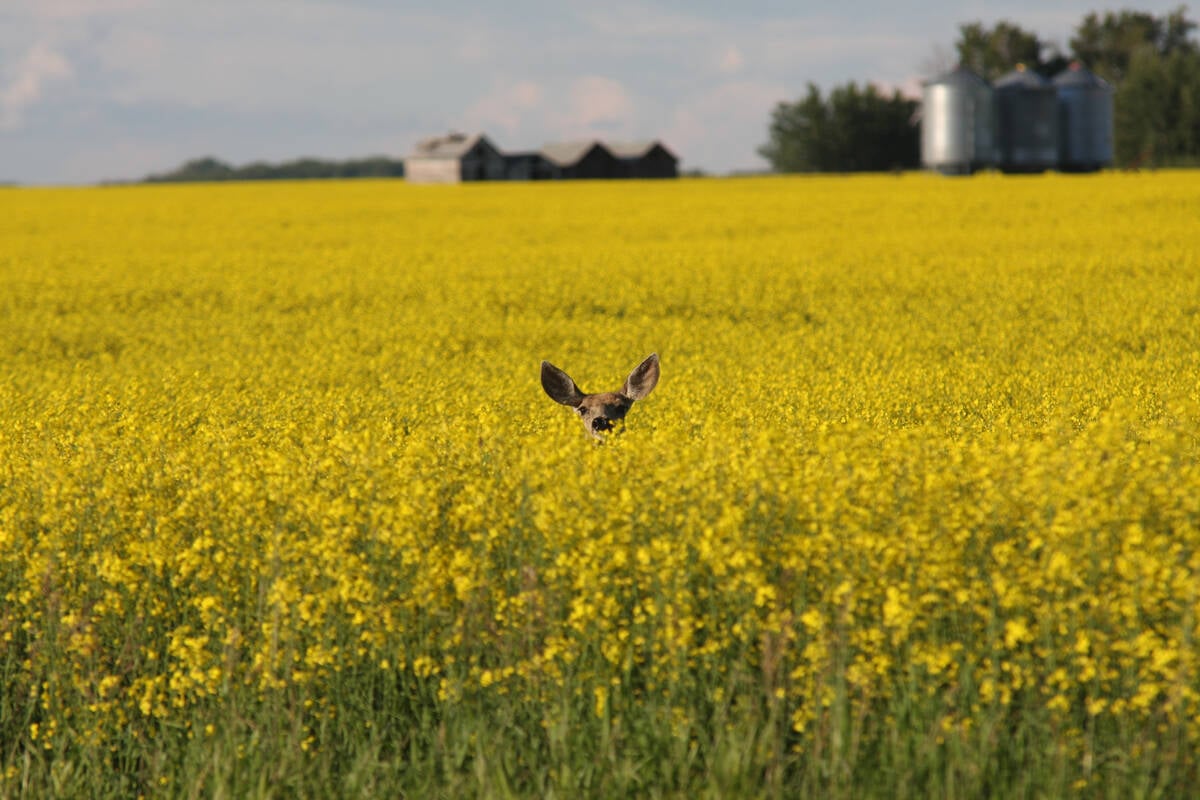Rick Suntjens takes pride in keeping the ditches neatly mowed when he cuts about 30 kilometres of highway right-of-ways for hay for his livestock.“I do as much as I can and make it as neat as possible,” said the Drumheller, Alta., farmer.Suntjens tries to make three passes with his 15 foot swather to make sure no strips of hay are left standing.He also spends a lot of time picking garbage, old mufflers, bits of tires and beer cans.Sometimes surprises can’t be helped. When a tire blows on a truck driving down the highway, it can fly into 1,000 pieces, he said.“Those can plug a machine pretty good. You have to really pay attention to what you’re doing.”One year, about 100 metres of discarded telephone line got sucked into his haybine and wrapped around the drums. It took him six hours of cutting, pulling and prying to get it out.The worst part is the litter thrown from passing cars.“Do you clean your table off by throwing the dishes on the floor? That really annoys me.”Despite the hassles of garbage, Suntjens believes haying the ditches is worth the effort. It’s a lot of work for a few bales in dry years, but rewarding this year with almost 15 centimetres of spring rain.He gets about one-quarter of the hay to feed his cattle from the ditches.“The majority is excellent hay,” he said.One stretch of highway is seeded to intermediate wheat grass, a high protein grass, but most is seeded to an alfalfa and meadow brome mix.Suntjens wonders why more people don’t cut the ditches to supplement their feed supply.“I’m proud of what I do and it’s worth doing.”Joan Horner of Hanna, Alta., has cut the ditches near her farm for about 20 years.“In dry years, it’s the only hay around. The runoff from the road makes it worthwhile,” she said.“On good years, we cut from fence to fence.”Horner said a small swather is necessary due to the slant of the road and a sharp eye is needed to look out for garbage like shoes.“Why people throw out shoes I can’t imagine. Half the time, the grass is so high, you can’t see the garbage until you’ve cut it. Then when you feed the bales in the winter, you’re picking up garbage again,” she said.The hay is good quality and worth the challenges faced, Horner said.In Alberta, permits are required from Alberta Transportation for haying the ditches. Permits are free but haying must be completed by July 16 and bales must be removed two weeks after haying.Permits are not required for haying ditches along provincial highways in Saskatchewan.Farmers whose land adjoins the highway are given first chance at the job, but after July 8, anyone can cut and salvage the hay unless the owner has started the job.The bales, which have to be eight metres from the shoulder, must be removed by Aug. 8.In Manitoba, there is no formal permit process.
Read Also

Drones now used to assess wildlife crop damage in Saskatchewan
Wildlife damage in Saskatchewan crops is now assessed by drones and artificial intelligence.














